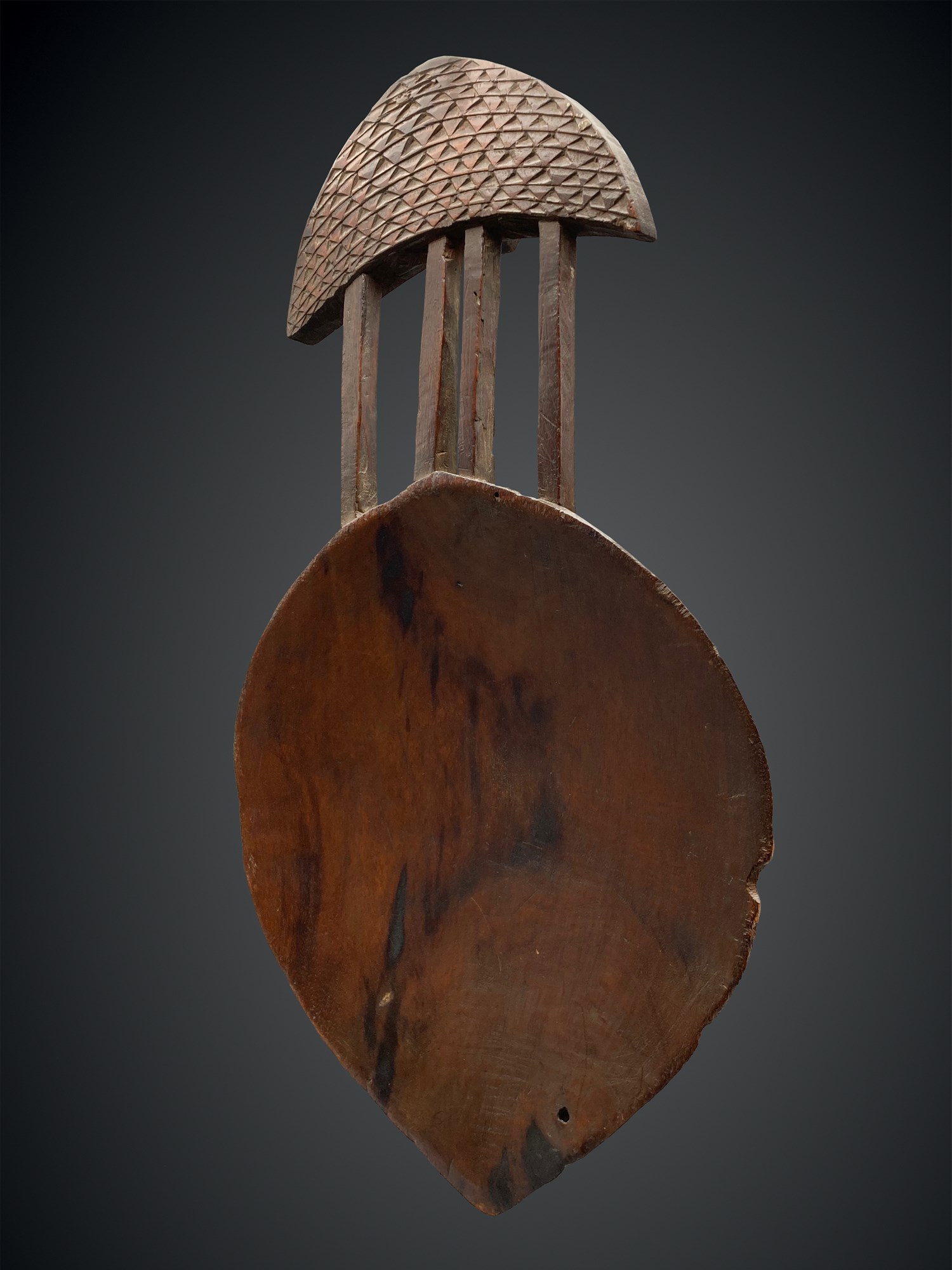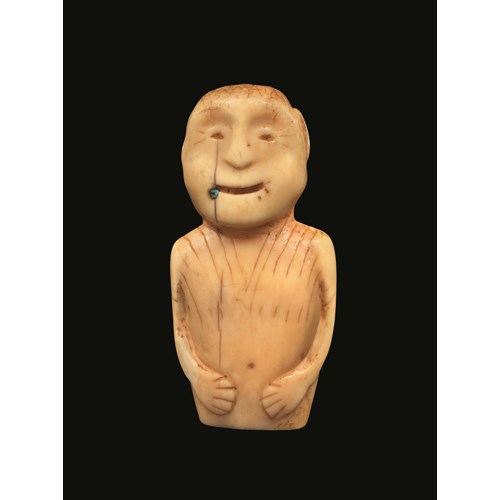Monzino Fiji Oil Dish
Epoque 19th century
Origine Fiji Islands, Polynesia
Medium Vesi wood
Dimension 56.9 x 30 x 8.6 cm (22³/₈ x 11³/₄ x 3³/₈ inches)
See the very similar example MAA:Z 3718 in the Museum of Anthropology, Cambridge which has a crescent handle with two panels of carved triangles collected by Sir Arthur Gordon between 1875 and 1880.
See the drawing : « Fiji Jaqona bowls Miss Gordon Cumming » for the various shapes of what Cumming describes as Jaqona (yaqona or Kava) bowls or dishes. There is a constant discrepancy between scholars with some declaring in their publications these lenticular flat dishes as for the drinking of kava while others describe them as oil dishes.
BM registration N° Oc2006,Drg.421. NB : the British Museum describes this drawing as : « … tracings of drawings made by Constance Gordon-Cumming, of objects collected in Fiji by Baron Von Hugel and Sir Arthur Gordon. These objects are now in the Cambridge Museum of Archaeology and Anthropology. Whether or not the tracings were made by Constance Gordon-Cumming is unclear. »
Epoque: 19th century
Origine: Fiji Islands, Polynesia
Medium: Vesi wood
Dimension: 56.9 x 30 x 8.6 cm (22³/₈ x 11³/₄ x 3³/₈ inches)
Provenance: Ex coll.: Carlo Monzino & Haralabos Melenos, Castagnola, Switzerland. INV. N° 181/4. Acquired Sotheby's Paris, September 30, 2002, African, Oceanic and Pre-Columbian Art - the Jacob Epstein and Carlo Monzino collections, lot 97.
Carlo Monzino (1931-1996)
His collecting passion began with a fascination for Japanese and Indian art when he was in his thirties. He then evolved towards the art of Africa and the Pacific all the while collecting important modern art. He is credited with being one of the first to recognize the importance of Jean Fautrier and was as well a close friend and patron of Andy Warhol. In 1964 with the help of Charles Ratton he was able to acquire most of the outstanding collection of the sculptor and collector Sir Jacob Epstein – in all some 900 pieces ! Carlo Monzino devoted a lot of time and expense towards developing the understanding of primitive cultures, inviting well known academics to give interviews and conferences as well as publishing a scholarly revue "Quaderni Poro".
Literature: Ref.:
Clunie, Fergus: YALO i VITI. Fiji Museum, Suva. 1986.
Ewins, Rod: FIJIAN ARTIFACTS, TASMANIAN MUSEUM AND ART GALLERY COLLECTION. Tasmanian Museum and Art Gallery, Hobart. 1982.
Hooper, Steven & Roth, Jane (ed): THE FIJI JOURNALS OF BARON ANATOL VON HÜGEL 1875-1877. Fiji Museum, Suva. 1990.
Hooper, Steven :FIJI – Art & Life in the Pacific. Sainsbury Reaserch Unit for the Arts of Africa, Oceania & the Americas. University of East Anglica, Norwich, 2016
Plus d'œuvres d'art de la Galerie









